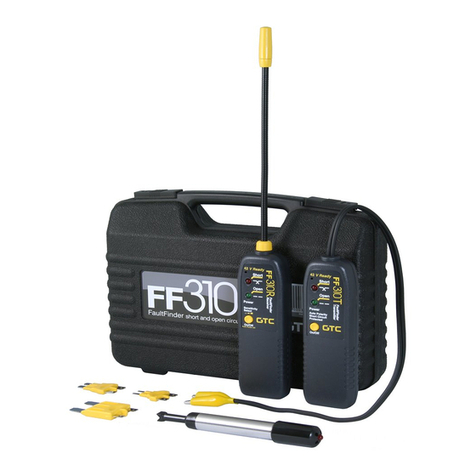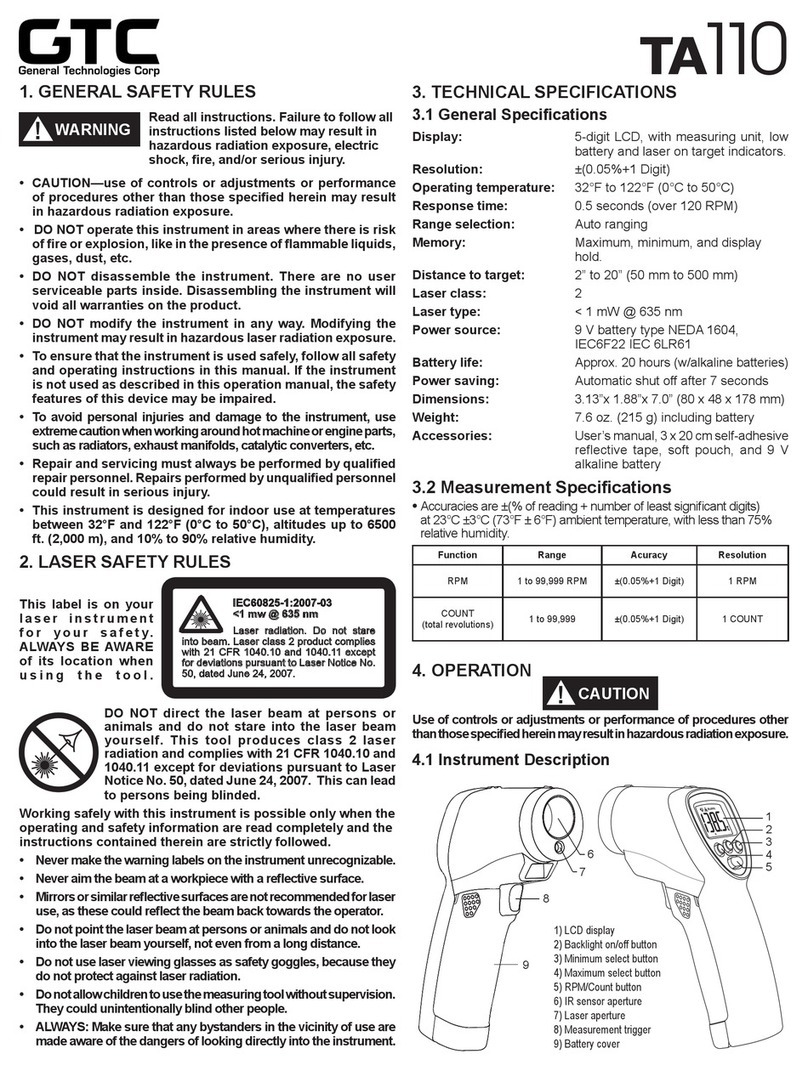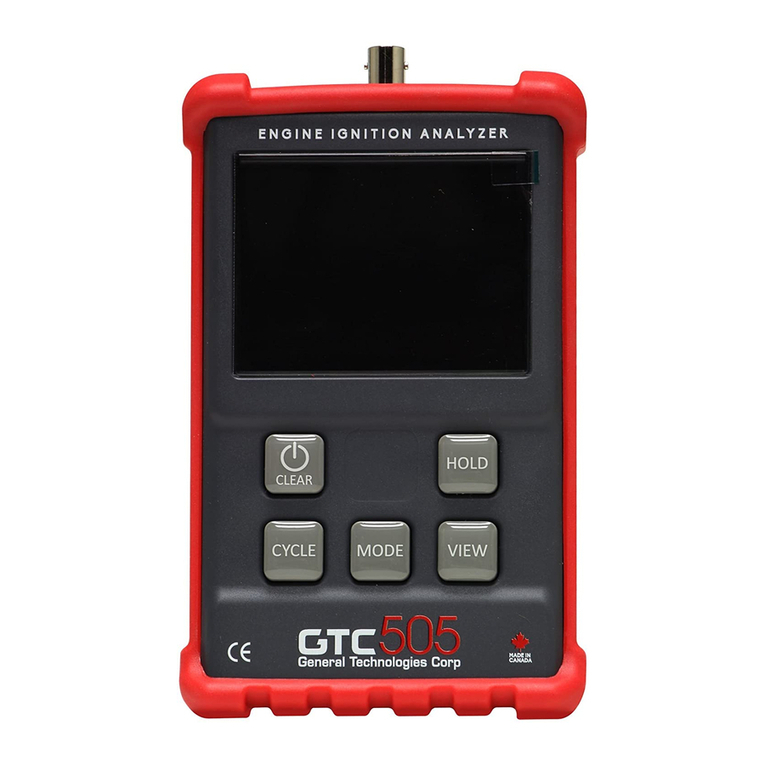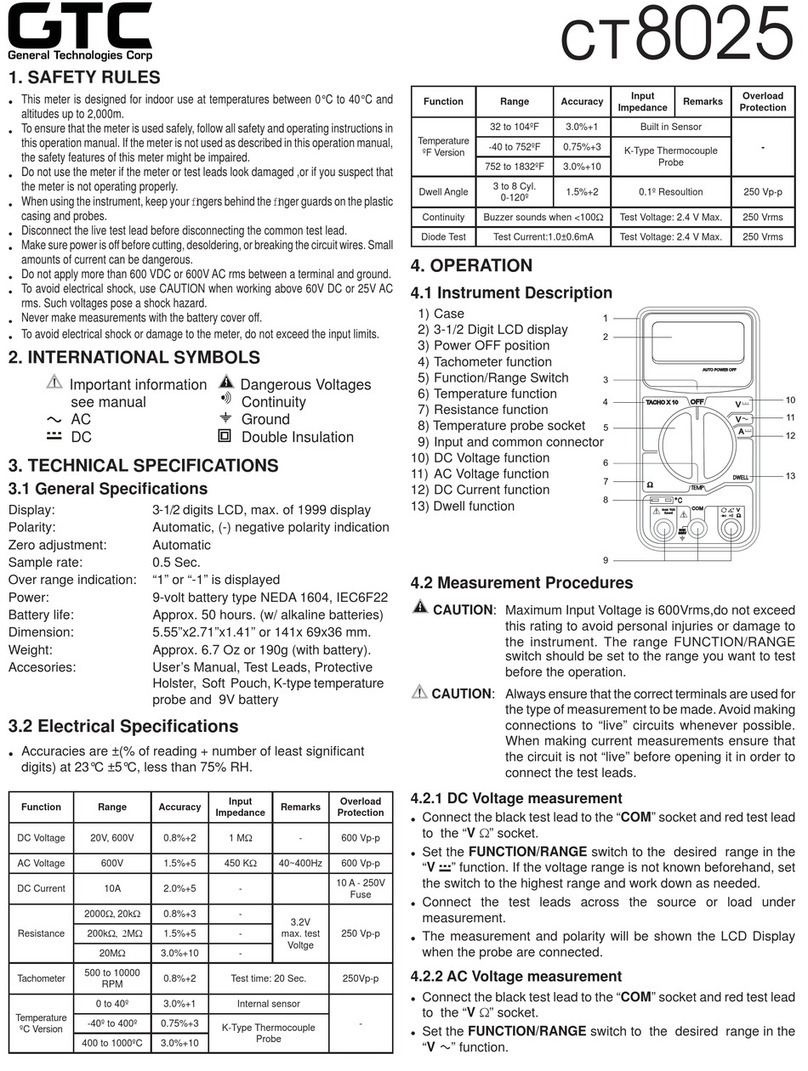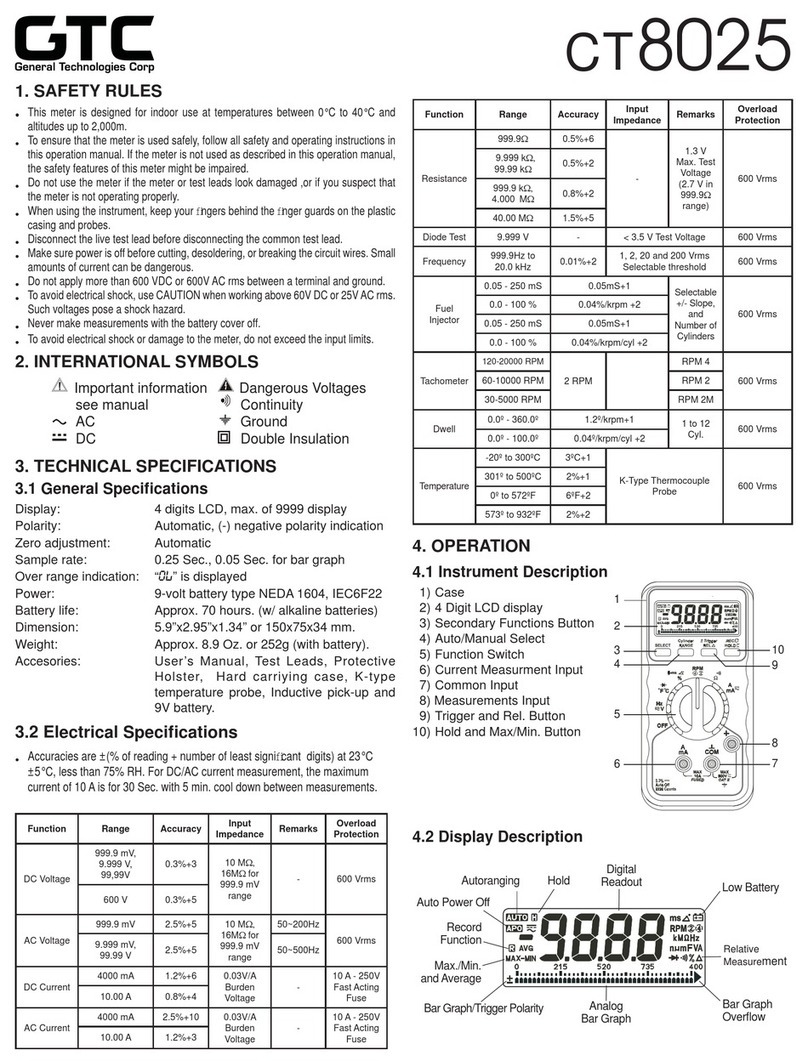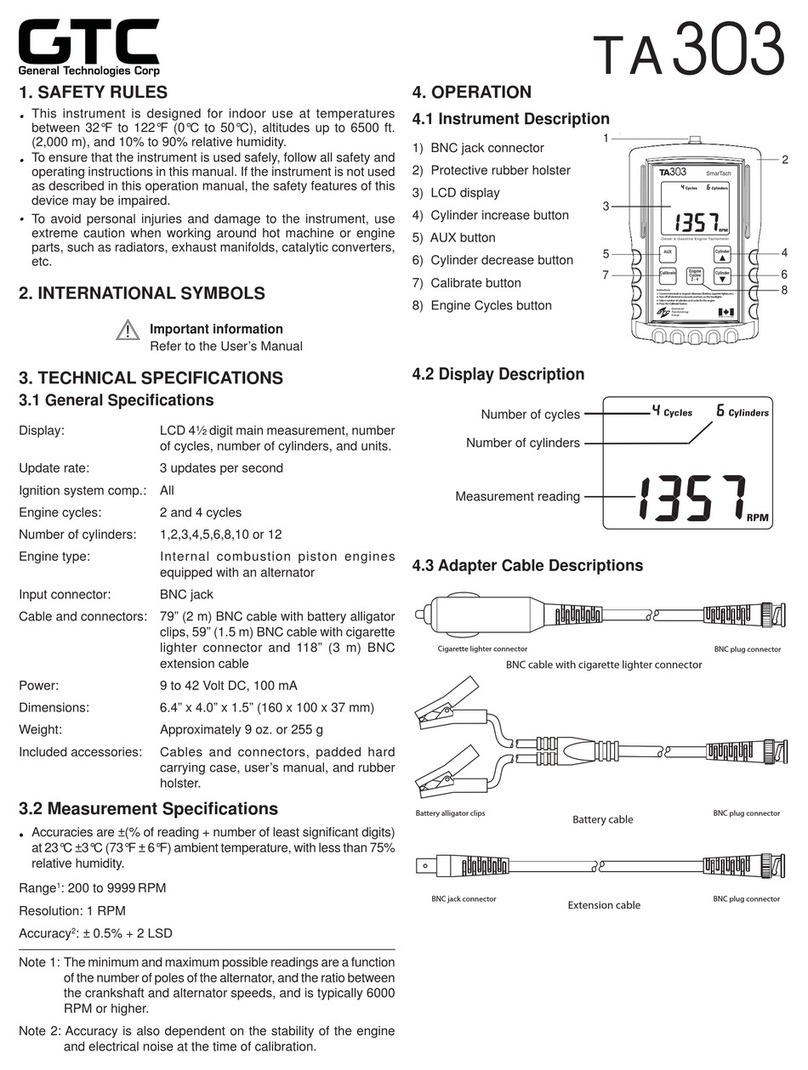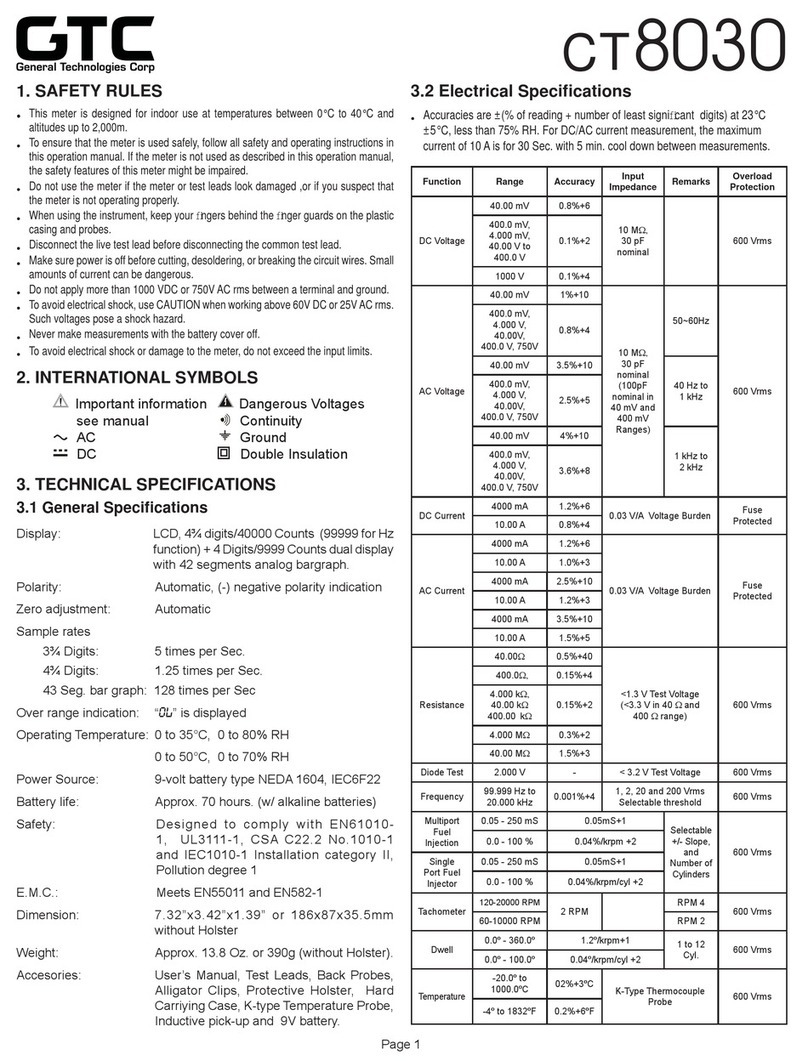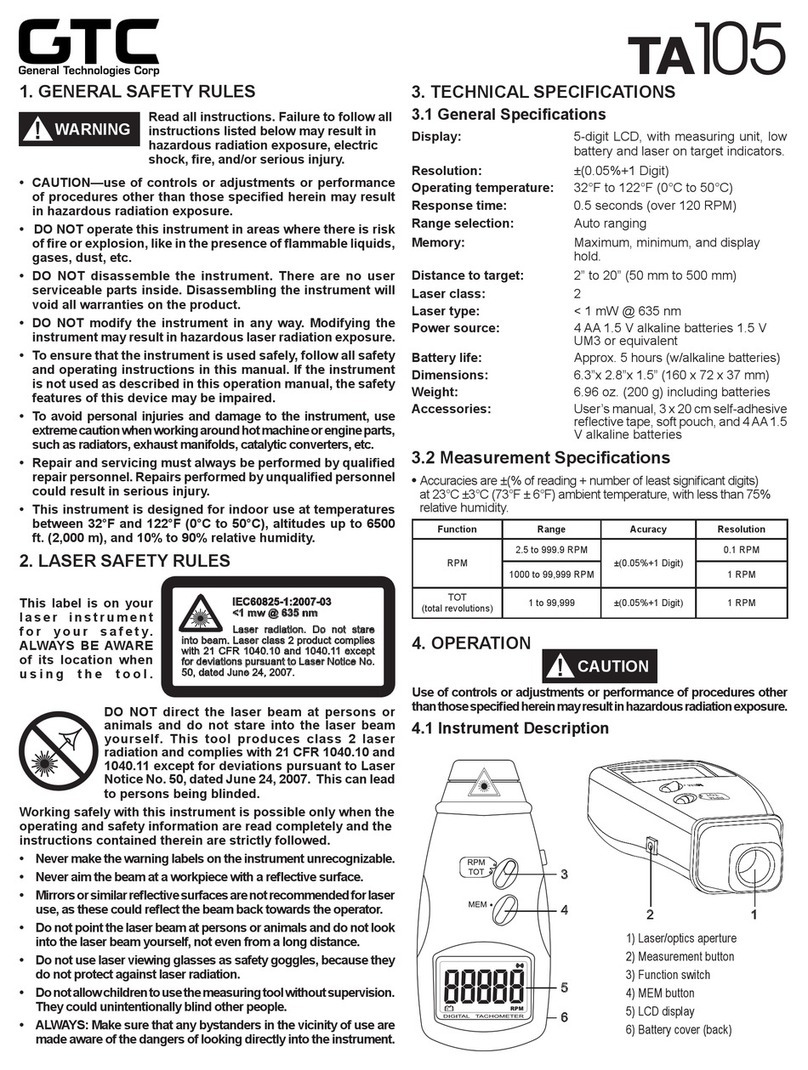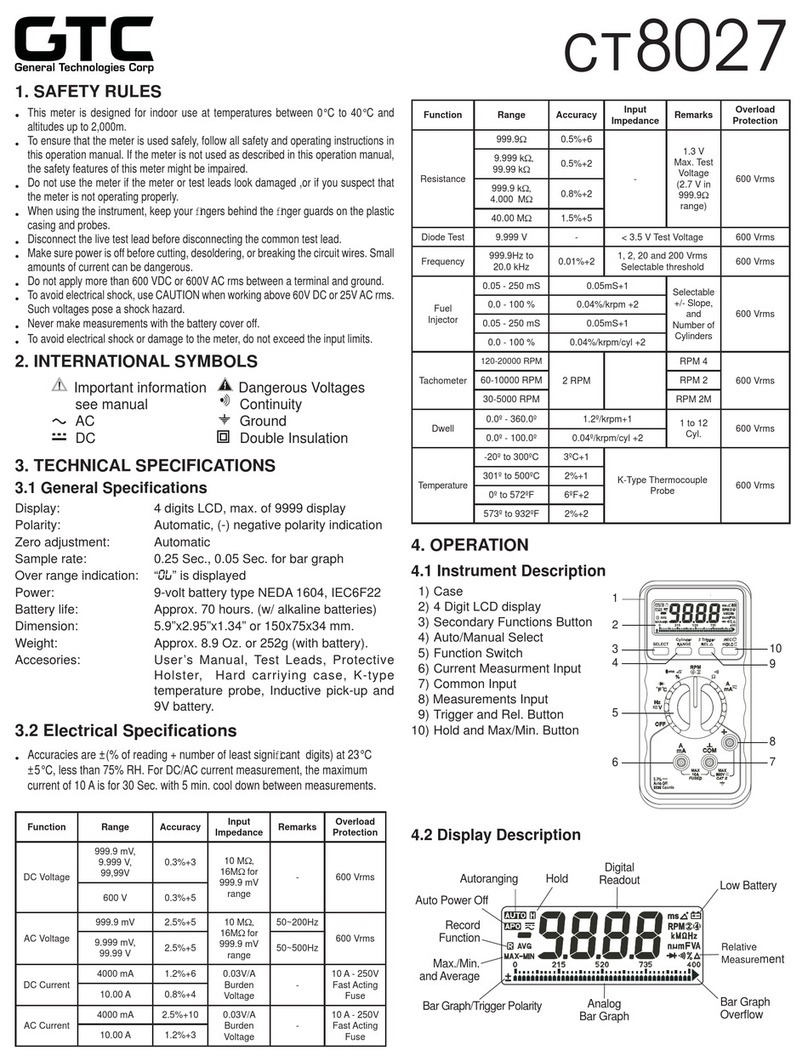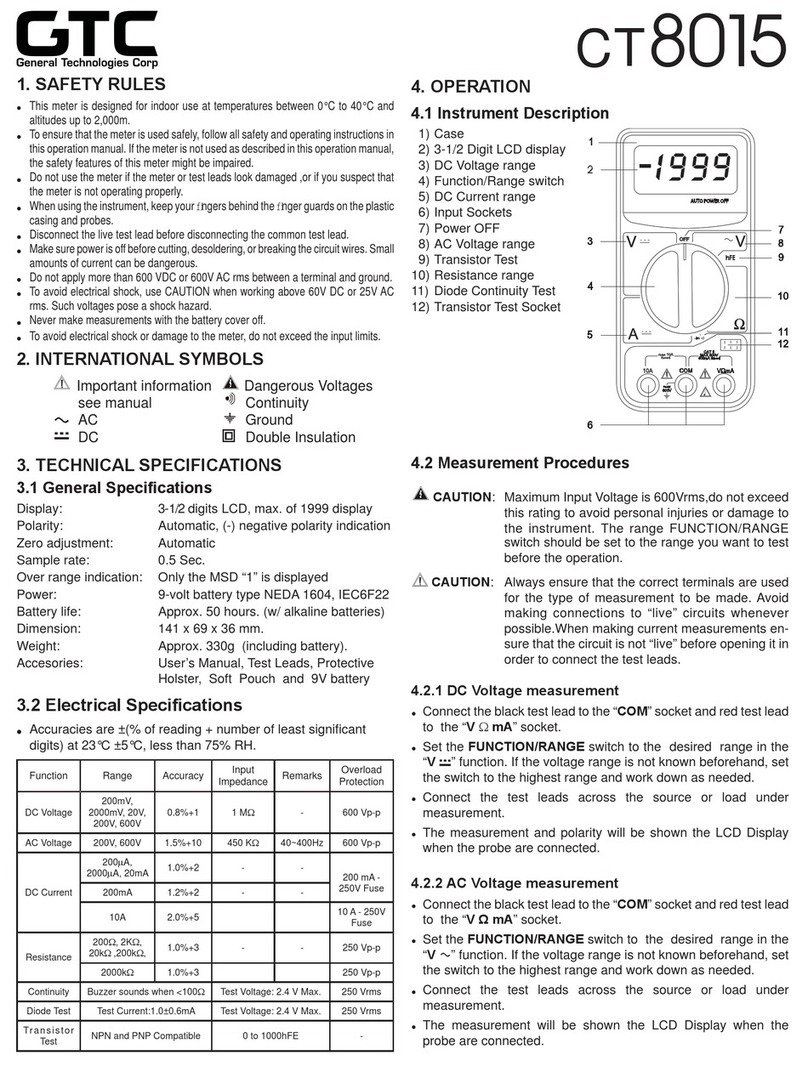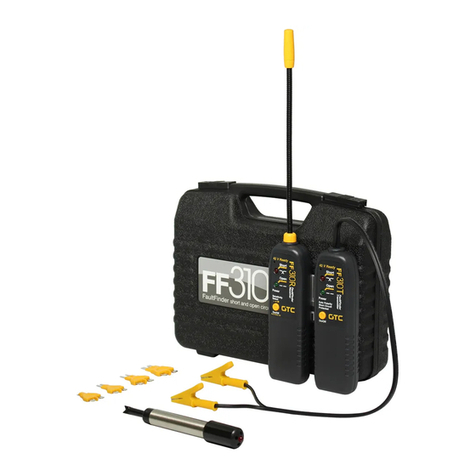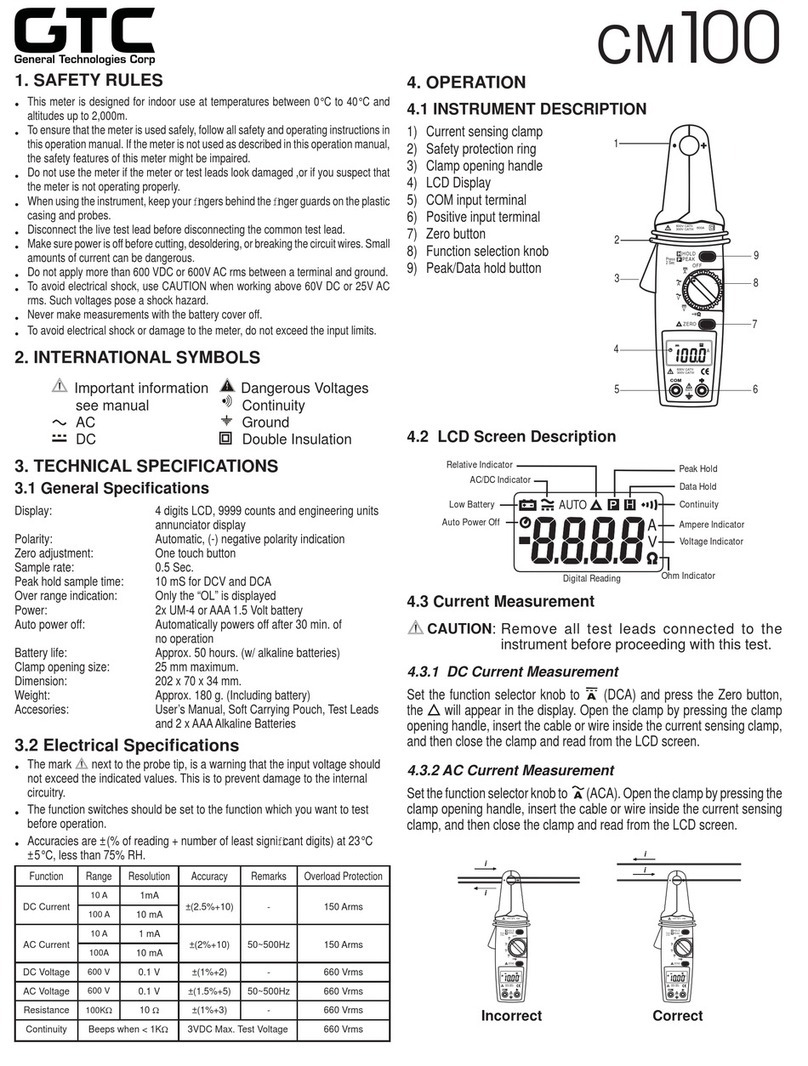
4.3.1 AC/DC Voltage measurement
• Connect the black test lead to the “COM” socket and red test lead
to the “V mA” socket.
• Set the FUNCTION SWITCH to the desired range:
“ V” function for Manual range
“V” function for Auto range
•If MANUAL MODE is selected and the voltage range is not
known beforehand, using the RANGE BUTTON to set the range
to the highest and work down as needed.
• If in MANUAL MODE, select AC or DC voltage measurement by
pressing the AC/DC/Beeper/Diode Button function button.
• Connect the test leads across the source or load under
measurement.
• The measurement and polarity will be shown the LCD Display
when the probe are connected.
4.3.2 AC/DC Current measurement
• Connect the black test lead to the “COM” socket and red test lead to:
“V mA” for measurements below 320 mA
“10 A” for measurements between 320 mA and 10 A
•Select the current range using the FUNCTION SWITCH, if the
current range is not known beforehand, start with the highest
range and work down as needed.
• If needed select AC or DC current measurement by pressing the
AC/DC/Beeper/Diode Button function button.
• Connect the test leads in series with the circuit or load under
measurement.
• The measurement and polarity will be shown the LCD Display
when the probe are connected and current flows through the
meter.
4.3.3 Resistance measurement
CAUTION: Maximum Input Voltage for this function is 250
Vrms for less than 10 Sec., do not exceed this
rating to avoid personal injuries or damage to the
instrument. Also ensure there is no power applied
to the component or circuit and all capacitors are
discharged.
• Connect the black test lead to the “” socket and red test
lead to the “V mA” socket.
• Set the FUNCTION SWITCH switch to the “” function.
• Connect the test leads across the componet or circuit under
measurement.
• The range will adjust automatically for optimal readout,
and the measurement will be shown the LCD Display when the
probe are connected.
4.4 Other Functions
CAUTION: Maximum Input Voltage for this function is 250
Vrms for less than 10 Sec., do not exceed this
rating to avoid personal injuries or damage to the
instrument. Also ensure there is no power applied
to the diode.
4.4.1 Diode test
• Connect the black test lead to the “COM” socket and red test lead
to the “V mA” socket.
• Set the FUNCTION/RANGE switch to the “” function.
• Press the AC/DC/Beeper/Diode button until the diode test
enable symbol appears on the display
• Proceed to connect the test leads across the diode observing the
polarity: red probe to the anode (+) of the diode and black test
lead to the cathode (-).
• The measurement will be shown on the LCD Display when the
diode is connected.
4.4.2 Continuity Test
• Connect the black test lead to the “COM” socket and red test lead
to the “V mA” socket.
• Set the FUNCTION/RANGE switch to the “” function.
• Press the AC/DC/Beeper/Diode button until the beeper enable
symbol appears on the display
• Proceed to connect the test leads across the circuit or component to test.
• Buzzer will sound if the circuit resistance is below 18
4.4.3 Display Hold
The Hold Button is used to hold display readings during
measurements.
• Pressing the button holds the display reading, and “H” appears
on the display.
• Pressing the button again resumes normal operation.
5. MAINTENANCE
CAUTION: Before attempting battery removal or replacement,
disconnect test leads and remove the instrument
from any energized circuit to avoid shock hazard.
5.1 Battery Replacement
• To replacethebattery,remove thescrewof theback BatteryCover
(back of the case) and remove the batteries.
• Replacewith new1.5 Valkaline batterytypeAA,UM3 orequivalent
observing the proper polarity from the diagram on the label inside
the battery compartment.
• Reinstall the battery cover and tighten the securing screw.
5.2 Fuse replacement
• Remove the screw of the back Battery Cover (back of the case)
and remove the batteries.
• Remove the four screws at the bottom of the case and of the bat-
tery compartment.
• Replace new fuses only with the identical type and rating.
F1=200mA: Type IEC60127-2 or UL248-14 (5 x 20mm)
fast acting fuse, rated at 400mA/250V.
F2=10A: Type IEC60127-2 orUL248-14 (6.3x25.4mm)
fast acting fuse, rated at 10A/250V.
• Reinstall the back cover, and replace the four screws.
• Reinstallthebatteryobservingthepolarityonthebatterycompartment
label, the battery cover and tighten the securing screw.
5.3 Cleaning
Periodicallywipe the casewith asoft damp clothand mildhousehold
cleanser.Do notuse abrasivesor solvents.Ensure thatno watergets
inside the instrument to prevent possible shorts and damage.
6. WARRANTY
One year limited warranty, excluding batteries and fuses. For details
see Standard Warranty Information in our webpage or you may request
a printed copy.
© Copyright 2017 General Technologies
General Technologies Corp.
#121 - 7350 72nd Street Tel.: (604) 952-6699
Delta, BC V4G 1H9 Fax: (604) 952-6690
Canada www.gtc.ca












